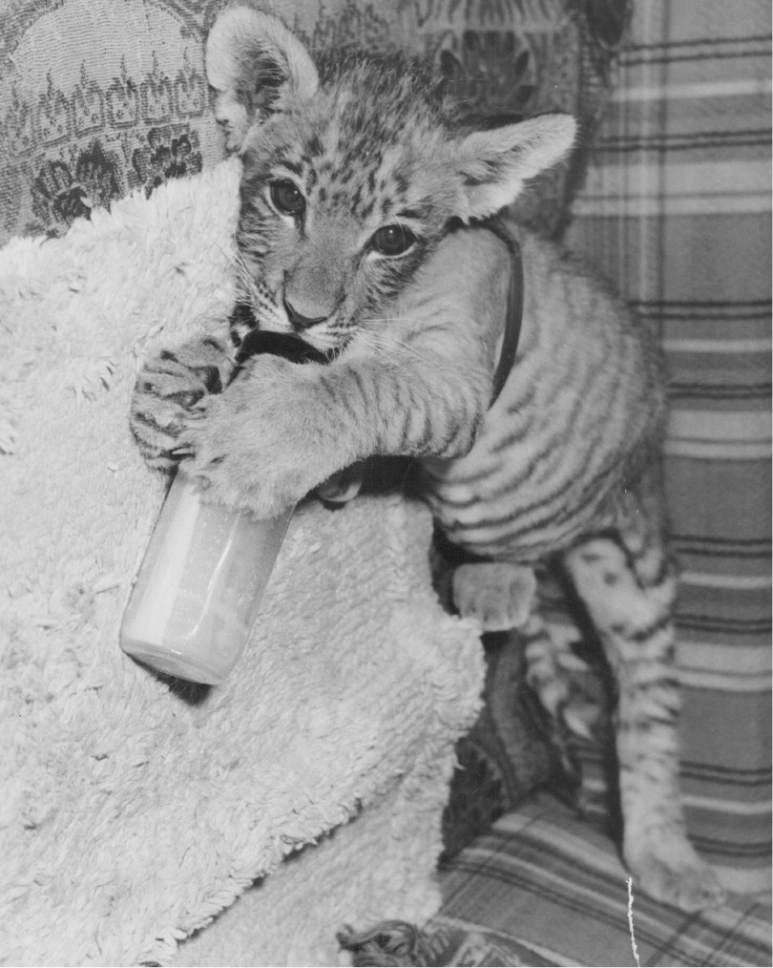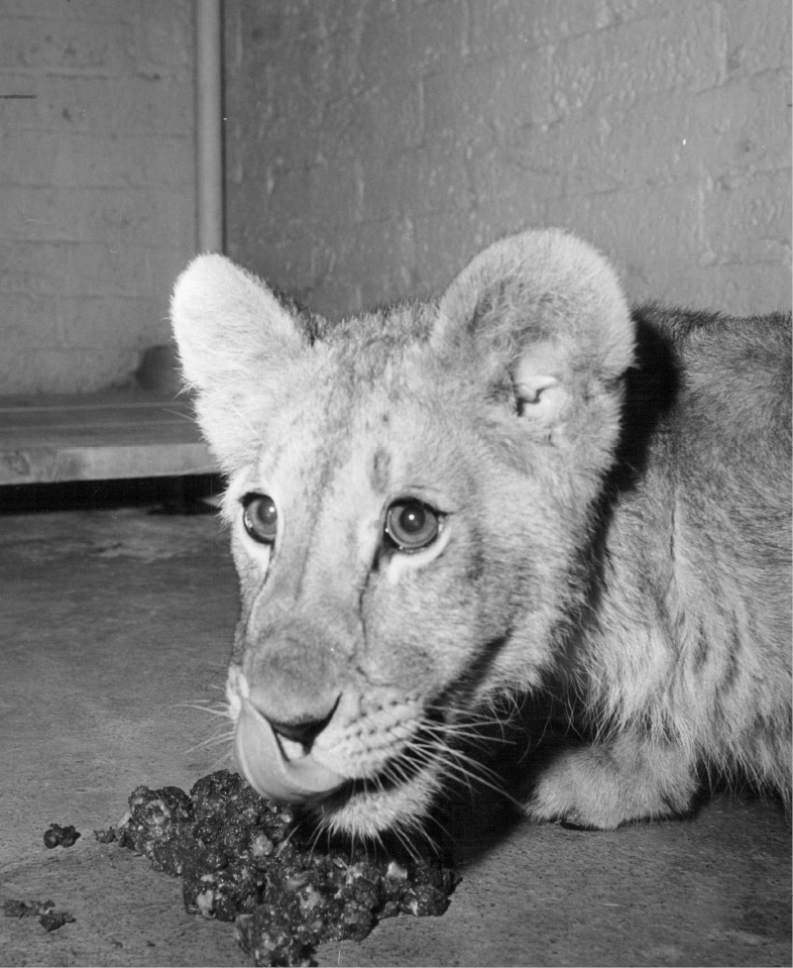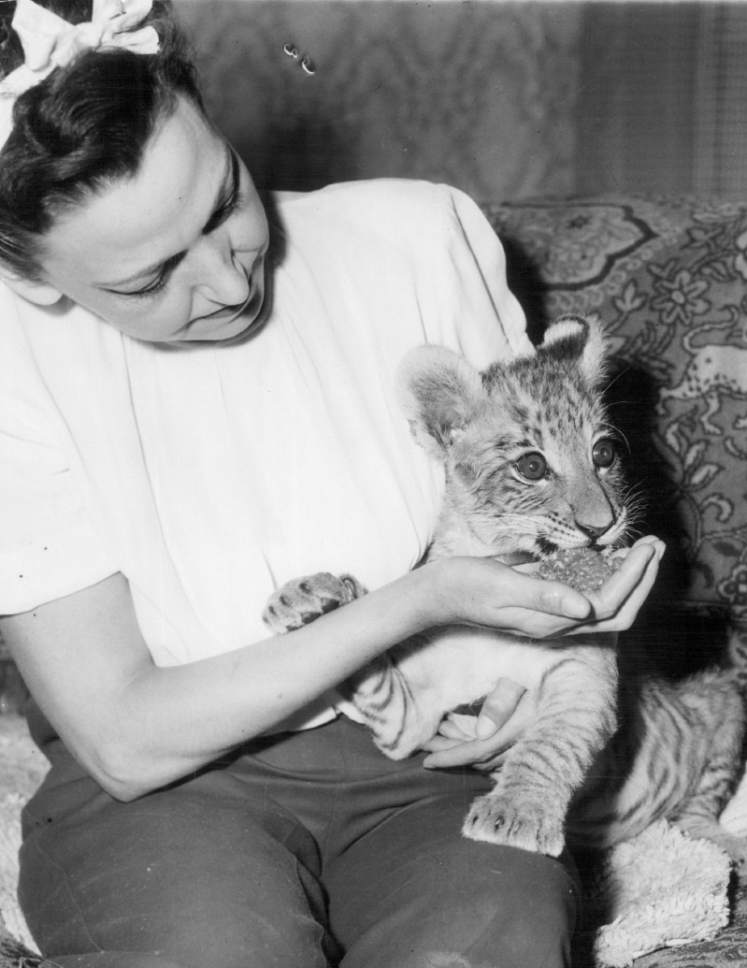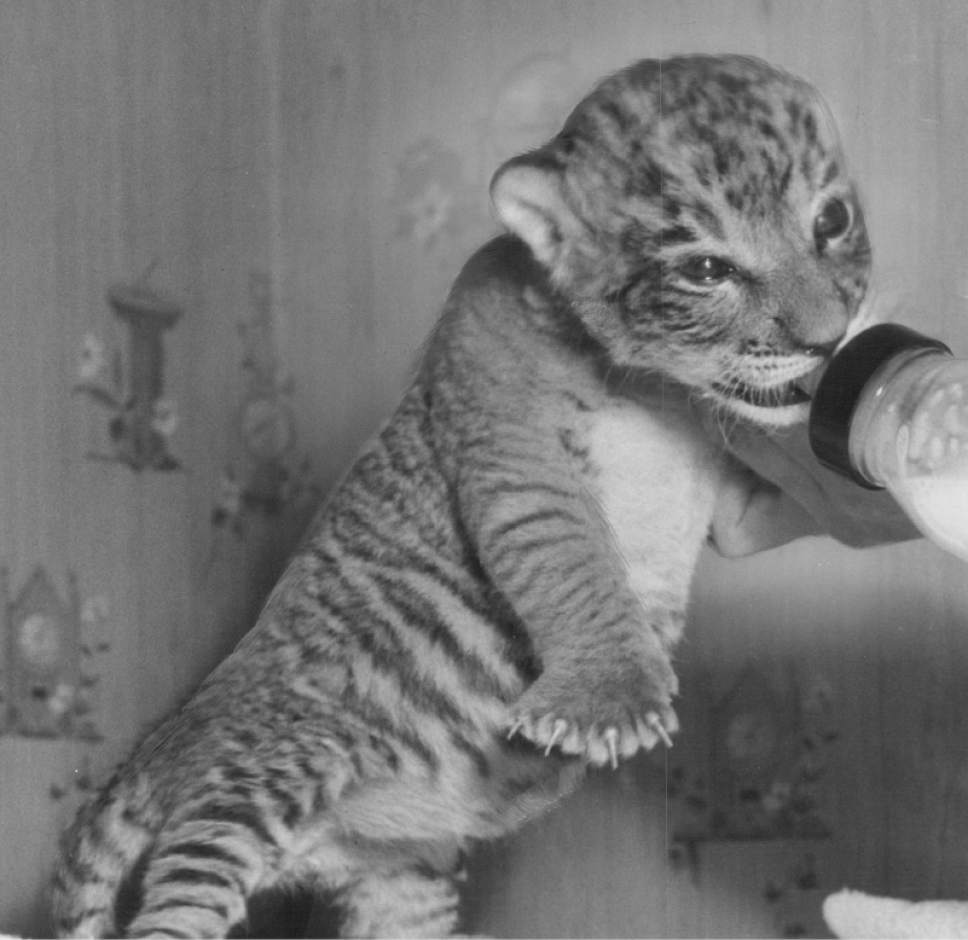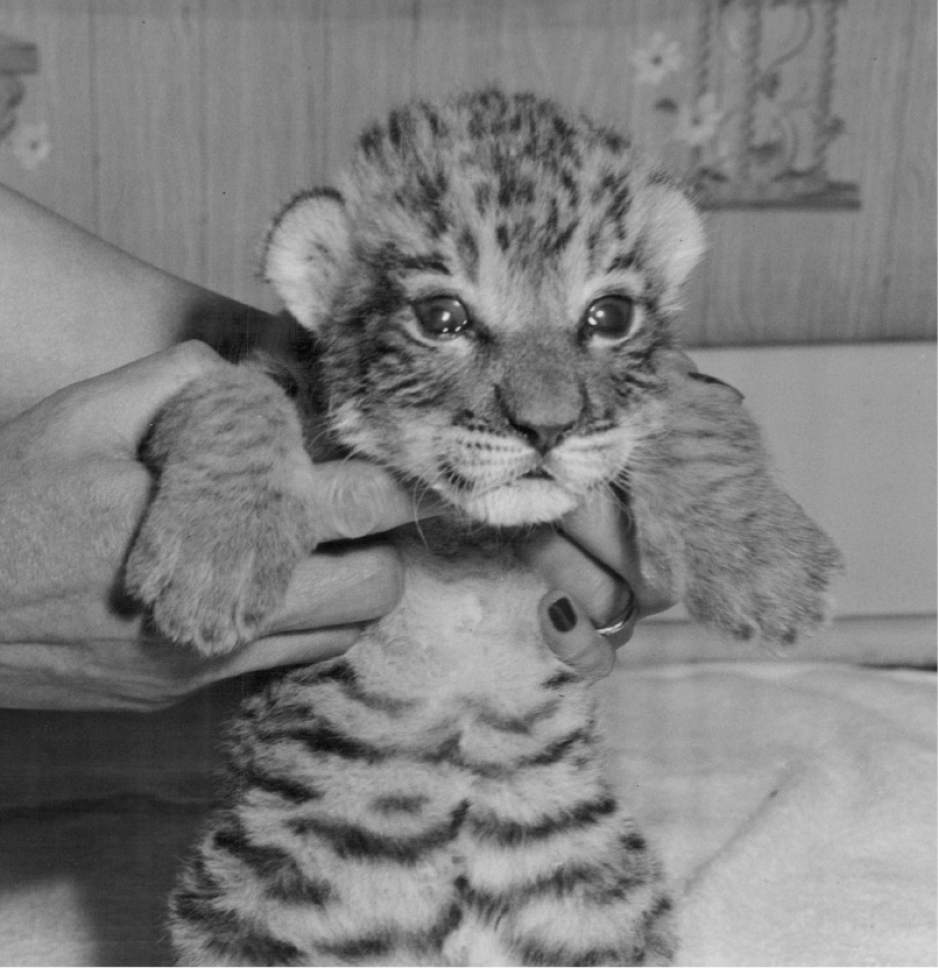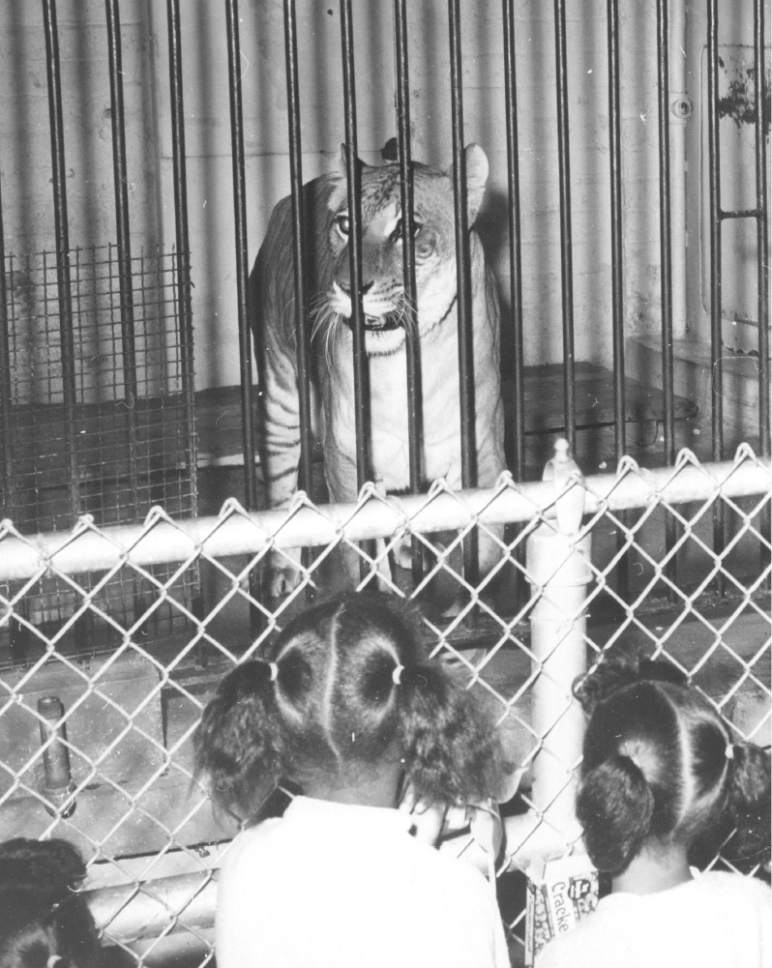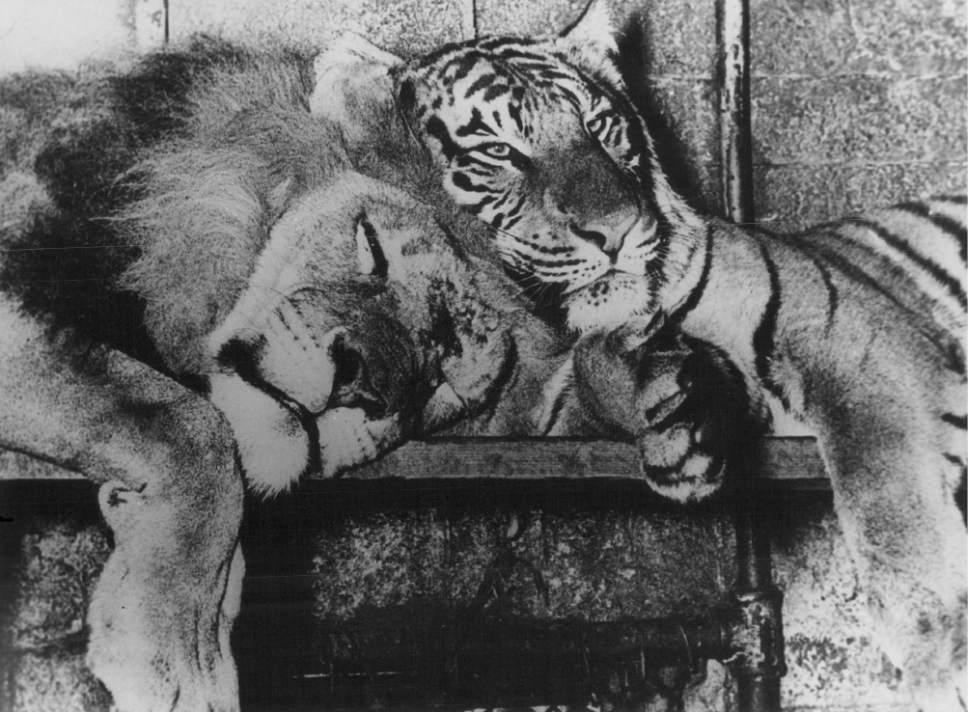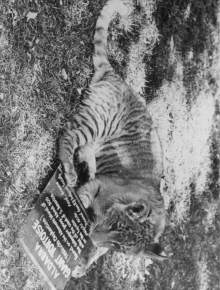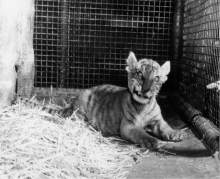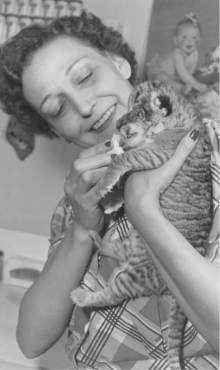This is an archived article that was published on sltrib.com in 2016, and information in the article may be outdated. It is provided only for personal research purposes and may not be reprinted.
Editor's note • In this regular series, The Salt Lake Tribune explores the once-favorite places and items of Utahns, from restaurants to recreation to retail.
Back in 1948, Salt Lake City's Hogle Zoo was small and struggling. But a special birth on May 6 that year would change everything.
For the first time in America, a liger — half lion, half tiger — was born there, and became national news.
She was called Shasta and would draw extra thousands of visitors from afar annually during her still-record 24 years of life. The crowds, their money and the attention she attracted helped build the zoo from mediocrity to top-tier status.
Even after she died in 1972, Shasta was sent to a taxidermist and her stuffed body attracted curiosity seekers to the zoo for decades more.
But, in 1997, she was removed as such hybrids became more controversial at zoos. Stuffed Shasta now helps attract visitors to the Monte L. Bean Life Science Museum at Brigham Young University, where guides talk about the ethics of crossbreeding.
"She was really the attraction that kept the zoo going," says LaMar Farnsworth, who as a young zoologist took care of her for several years along with other large cats and elephants. He later would become director of the zoo.
"The zoo was so small at the time that she practically was the only draw that it had. At that time, there weren't too many people who visited," he said. "She was the big draw."
Shasta's mother was Daisy, a tiger. Her father was Huey, a lion. Daisy and Huey had been raised together as youngsters for a time — which zoo officials said was a reason they were able to mate the pair. Newspapers reported at the time that similar attempts elsewhere led to potential parents killing or injuring each other.
"The people who were in charge of the zoo at the time were former circus people. They put the parents together on purpose hoping for something like that," Farnsworth says, noting that lions and tigers do not mate in the wild.
"Shasta was probably better suited for the circus than a zoo because she was a rare oddity, not one that most of the zoo community thought should be there," Farnsworth added.
Shasta weighed 1 pound 12 ounces at birth. Her mother rejected her, so newspapers said city parks director Joseph L. Sloan took the kitten home to bottle-feed her.
When she reached 30 pounds, she was put on public display — and was instantly the zoo's star. Huge crowds came to see the cat with the face of a lion and stripes of a tiger.
While Shasta was named through a Deseret News contest, Farnsworth said zoo workers joked that the name was appropriate for the pampered celebrity cat. "People said she was named Shasta because She-hasta have this, and She-hasta have that."
He adds that Shasta "was the only liger in the country for a long time." When she was 9 years old, she became the only liger in the world for several years after the death of liger Rajah, in the Bloemfontein, South Africa, zoo.
"Everybody had to see her," Farnsworth says.
Big, loving crowds came to her annual birthday parties. In 1962, for example, The Salt Lake Tribune reported that 8,000 people attended her birthday party — with many arriving an hour before the zoo opened to ensure prime spots for the festivities.
"More than 6,000 birthday cards were presented to Shasta by boys and girls," The Tribune reported. The newspaper gave two bicycles and numerous plush stuffed toys to winners of a contest for the best birthday cards. All children were given free ice cream.
"Greetings sent to Shasta varied in sizes, shapes and kinds. Jerry deBary, zoo director, said he received a singing birthday greeting over the telephone, while one Salt Lake youngster attached a small bit of meat for Shasta to eat," the newspaper added. (The director would die two years later after a puff adder bit him at the zoo.)
It was so busy that day in 1962 that deBary said "his office located 91 lost children, located four mothers, one father and turned over a large assortment of varied lost articles to rightful owners during the day's activities."
The newspaper said Shasta initially seemed excited for her party as she padded back and forth and put on a show for admirers. But after a few hours, she lost interest and took a long nap — while children continued to call out birthday greetings.
Robert E. Rampton, a reporter for The Tribune, once arranged a fake birthday cake for Shasta, intending to use it over again in following years, recalls his son, Robert L. Rampton of Taylorsville.
"I remember being in the Lion House when it was first wheeled out and placed in front of her cage," Robert L. Rampton wrote in an email. "She came to it and sniffed it through the bars then promptly turned around and urinated on it, much to my father's horror.
"The cake, which apparently cost several hundred dollars to have made, was now completely ruined. My dad groused about it for some time after that."
Farnsworth said Shasta was fine with the crowds. "But she didn't like people to bother her. Some guys would try to tease her, and boy she would get upset about that," as would her protective tenders.
As another sign of schoolchildren's love for Shasta, Valley Junior High in West Valley City, opened in 1949, chose the liger as its mascot.
Shasta holds the record for longevity among ligers at 24 years. Toward the end, she developed arthritis and her body systems declined — and she was taken off public display. She died July 19, 1972.
Farnsworth, who was then the zoo director, decided that because Shasta had been so loved and of such great interest, he sent her body to a taxidermist. "Then we put her on display in the old cat building," he said, "so she still got a lot of attention."
She was later shipped to the Bean Museum at BYU in 1997.
"There was a general philosophical change about hybrids. The thought was that since it didn't happen in nature, we shouldn't be doing it either in the zoo," said Larry St. Clair, director of the museum.
"So the zoo said it didn't match its mission to have it on display. They contacted us in the fall of 1997 and asked if we would be willing to take her here. We agreed."
St. Clair said attraction to Shasta there "is generational. There are people who remember her from the zoo and are delighted to see her here. There is that whole generation of children who saw her at the zoo. She was much loved, and was a real attraction and a real oddity."
He said that displaying her "allows us to talk about how some breeds are so closely related that hybrids are possible, but there are also drawbacks to that. Most of the time the hybrids are sterile. We use it as an opportunity to talk about the efficacy of doing that, and whether or not it is proper."
St. Clair added, "But that double benefit is it allows a lot of people who remember Shasta to renew that fond acquaintance."
Of note, ligers — which are more common now — are listed as the largest of big cats. One, named Hercules, who lived at a theme park in Miami, reached 922 pounds. Shasta was estimated to be around 400 pounds at her prime.
Full disclosure: Reporter Lee Davidson is a nephew of former Hogle Zoo Director LaMar Farnsworth. If you have a spot you'd like us to explore, email whateverhappenedto@sltrib.com with your ideas.
Twitter: @LeeHDavidson





